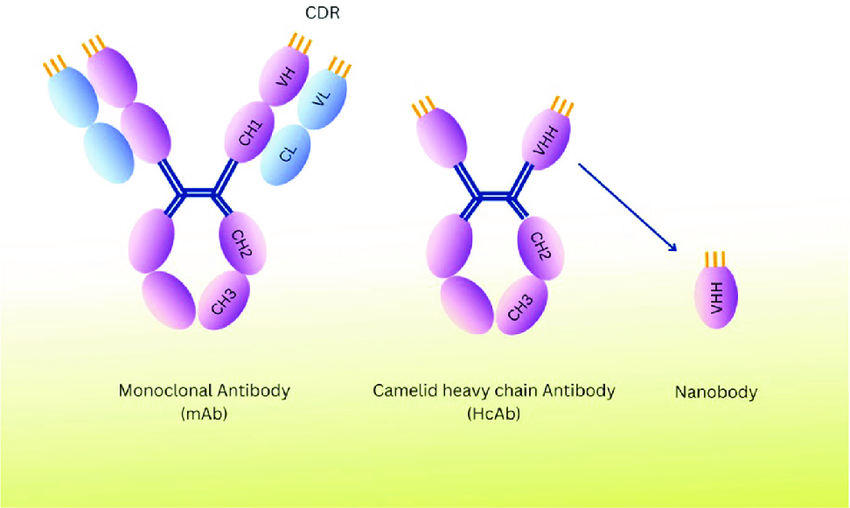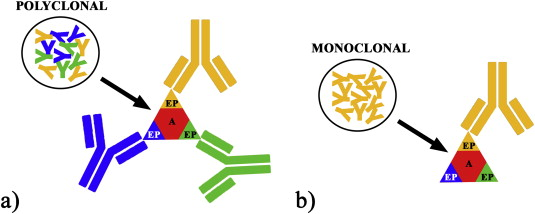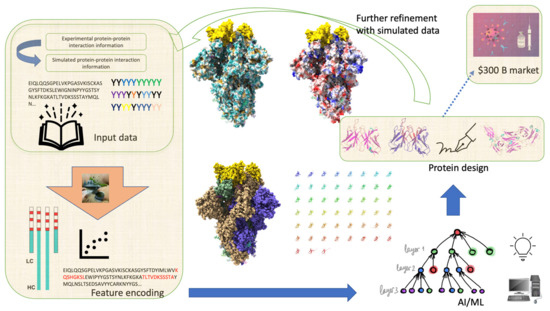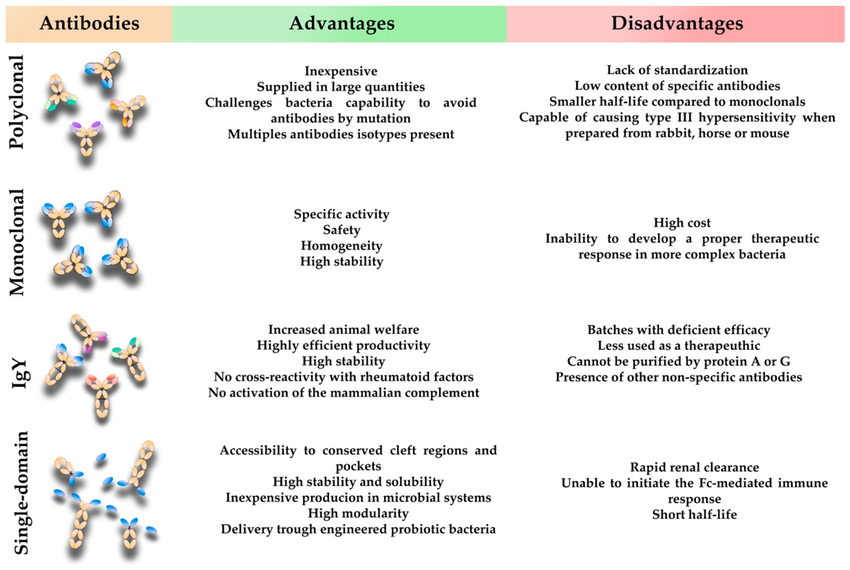Antibodies are at the forefront of diagnostic medicine, playing a pivotal role in enhancing the accuracy and speed of disease detection. The world of diagnostic tests has evolved significantly with the advent of monoclonal and polyclonal antibodies, revolutionizing everything from laboratory-based assays to point-of-care diagnostics. In this blog, we will delve into how innovative antibodies are shaping the future of diagnostics, providing faster and more reliable results across a wide range of medical conditions.
The Critical Role of Antibodies in Diagnostic Medicine
Antibodies are proteins produced by the immune system to identify and neutralize foreign invaders such as bacteria, viruses, and toxins. In the context of diagnostics, antibodies are utilized to detect specific biomarkers, pathogens, or abnormal proteins that are indicative of diseases. Their specificity and ability to bind with high affinity to their target molecules make them invaluable tools in clinical diagnostics.
One of the primary benefits of using antibodies in diagnostics is their ability to provide rapid, sensitive, and specific tests. This ensures that patients receive timely treatment, which is especially important in critical conditions such as infectious diseases, cancer, and autoimmune disorders.
Types of Antibodies in Diagnostic Tests
There are two main categories of antibodies used in diagnostics: monoclonal antibodies (mAbs) and polyclonal antibodies (pAbs).
1- Monoclonal Antibodies (mAbs)

These antibodies are identical and target a single epitope of an antigen. mAbs are produced using hybridoma technology, which involves fusing a single B-cell with a myeloma cell. This allows for large-scale production of identical antibodies that provide highly specific results, making them ideal for diagnostic tests. Examples of diagnostic applications of mAbs include ELISA tests, lateral flow assays, and immunohistochemistry.
2- Polyclonal Antibodies (pAbs)

In contrast, polyclonal antibodies are a mixture of antibodies that target different epitopes of the same antigen. They are produced by immunizing animals (such as rabbits or goats) and collecting their serum. Polyclonal antibodies offer a broader range of targets and can increase the sensitivity of diagnostic tests. However, they are less specific than monoclonal antibodies.
Antibody-Based Diagnostic Technologies
Several antibody-based diagnostic technologies have emerged as game-changers in healthcare. Some of the most widely used diagnostic platforms include:
- Enzyme-Linked Immunosorbent Assays (ELISA): ELISA is one of the most popular antibody-based diagnostic tests used in clinical laboratories. It allows for the quantitative detection of a wide range of pathogens, including viruses, bacteria, and fungi. ELISA tests are fast, reliable, and cost-effective, making them a go-to solution for many diagnostic applications.
- Lateral Flow Immunoassays: These point-of-care diagnostic tests provide rapid results and are used for conditions such as pregnancy, infectious diseases, and cardiac markers. Lateral flow assays use gold or latex nanoparticles conjugated to antibodies, which react with specific antigens, leading to a visible signal. They are particularly useful for diagnosing diseases in resource-limited settings.
- Western Blotting: This technique is used to detect specific proteins in a sample. It involves the transfer of proteins from a gel to a membrane, where they are probed with labeled antibodies. This method is widely used for confirming positive results from other tests and is particularly important in the detection of HIV and Lyme disease.
Innovative Antibodies for Enhanced Diagnostic Speed and Accuracy
Recent advancements in antibody engineering have led to the development of more sensitive and specific antibodies, thus improving diagnostic performance. Some key innovations include:
- Bispecific Antibodies: These antibodies can bind to two different antigens simultaneously, allowing for more complex assays and improving the sensitivity of diagnostic tests. Bispecific antibodies are particularly useful in the detection of cancer biomarkers and the monitoring of disease progression.
- Nanobody Technology: Nanobodies are smaller, more stable, and more cost-effective alternatives to traditional antibodies. Derived from camelids, these single-domain antibodies have been shown to be highly effective in diagnostics, especially for detecting small molecules or epitopes that traditional antibodies may struggle with.
- Fluorescent Antibodies: Fluorescent-labeled antibodies are used in assays like flow cytometry and immunofluorescence to detect low-abundance targets. Their ability to emit light upon excitation allows for precise measurement and high-throughput screening, making them indispensable in cancer research and immunology.
Advantages of Using Antibodies in Diagnostic Medicine
- High Sensitivity and Specificity: Antibodies can be designed to detect minute quantities of target molecules, ensuring accurate results with minimal false positives.
- Rapid Results: With the right antibody tests, results can be obtained in minutes, significantly speeding up the diagnostic process.
- Versatility: Antibody-based tests can be adapted for a wide range of diseases, from infectious diseases to chronic conditions like cancer and autoimmune disorders.
Antibodies for Future Diagnostics
The future of diagnostic medicine lies in personalized, point-of-care testing, and antibodies will continue to play a central role in this evolution. With advancements in biotechnology, the next generation of antibodies will be even more precise, providing doctors with faster and more reliable results. This will enable quicker decision-making and more effective patient care.
Product Links for Diagnostic Antibodies
To explore cutting-edge antibodies for diagnostics, consider these high-quality products:
- Pe Linked Polyclonal Antibody to Tight Junction Associated Protein
- Anti-Annexin A10A
- CCDC88C (NM0010804)
- Annexin VI (ANXA6)
- Recombinant Ictalurid Fish Protein
- Cyan Fluorescent Protein
These products are pivotal in advancing the capabilities of diagnostic medicine, contributing to faster, more accurate disease detection. By integrating these antibodies into your diagnostic workflows, you can enhance both the speed and reliability of patient care.
![Overview of monoclonal antibody therapies. There are three main categories. The first category utilizes naked antibody and kills the target cell by antibody-dependent cell-mediated cytotoxicity (ADCC) and complement-dependent cytotoxicity (CDC). The second category comprises immunoconjugates where an antibody is linked to a radionuclide (radioimmunoconjugate), drug (antibody-drug conjugate), enzyme (antibody-directed enzyme prodrug therapy, ADEPT), or liposome (immunoliposome). The third category utilizes a multistep targeting approach where the antibodies are engineered to be specific either to the chimeric T-cell signaling domain/receptor (CAR-T) or T-cell marker (bispecific antibodies), along with specificity towards target cell for enhanced effector function (adapted from Carter 2001 [18], and Lu et al. 2020 [19]). Overview of monoclonal antibody therapies. There are three main categories. The first category utilizes naked antibody and kills the target cell by antibody-dependent cell-mediated cytotoxicity (ADCC) and complement-dependent cytotoxicity (CDC). The second category comprises immunoconjugates where an antibody is linked to a radionuclide (radioimmunoconjugate), drug (antibody-drug conjugate), enzyme (antibody-directed enzyme prodrug therapy, ADEPT), or liposome (immunoliposome). The third category utilizes a multistep targeting approach where the antibodies are engineered to be specific either to the chimeric T-cell signaling domain/receptor (CAR-T) or T-cell marker (bispecific antibodies), along with specificity towards target cell for enhanced effector function (adapted from Carter 2001 [18], and Lu et al. 2020 [19]).](/web/image/179372-420bc86d/image.png?access_token=ab60920d-8c13-471b-abd3-b5a7c63ceb18)

